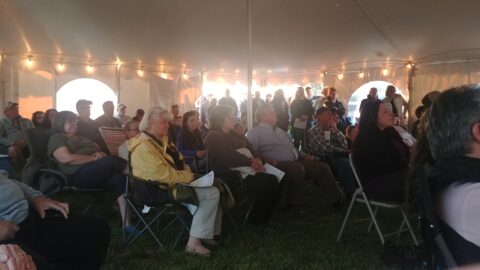The e-mail box is filling up fast these days, so after just a month I felt the need to relieve some of that pressure, as it were. Plus I just felt like writing something over the weekend (how’s that for honesty?)
As I have said probably 100 times or so in the past, these are dollops of bloggy goodness which aren’t promoted to a post but deserve some sort of mention, whether a few sentences or a handful of paragraphs.
The protectionist racket
I’ve referred to this man and group many times in the past, but the Alliance for American Manufacturing and their president Scott Paul are nothing if not consistent. After the February job numbers came out, Paul had this to say:
It’s good to see factory job growth resume after January’s slump, but the pace must pick up. At this rate, recovering all the manufacturing jobs lost during the pandemic will take more than two years.
That’s why it is so important for Congress and the Biden administration to speedily complete the short-term COVID-19 rescue package, and then shift to work on a sustained, robust public investment in infrastructure, clean energy, and innovation.
One thing to point out here: January goods imports were the highest on record. Made in America procurement efforts and the rebuilding of domestic supply chains couldn’t come at a better time.
Alliance for American Manufacturing press release, March 5, 2021.
I always appreciate their perspective; Lord knows their hearts are in the right place. But what has always concerned me about the AAM’s steadfast support of protectionism is what I call the Trabant effect, named after the East German car that vanished once the Berlin Wall came down and former denizens of that communist regime could buy other cars that were thirty years more advanced.
I believe we have better workers than China could ever have, although it’s worth noting that China didn’t start eating our lunch until they adopted a hybrid mix of totalitarian government with just enough capitalism to keep people from starving. There are certainly some in the wealthy category in China, but they aren’t self-made – they have to have some connection to the ruling party in order to succeed.
Even without taxpayer “investment” in infrastructure we have enough of a market to create massive wealth, if the government would just get out of the way. That’s where I often part with the AAM, which is an extension of several steelworker unions.
Illustrating absurdity
We all know that Joe Biden has made a mockery of a situation that President Trump was quickly gaining control of: border security and illegal immigration. But when you see things in graphic form, as the Heritage Foundation has put together, the changes are brought into perspective.
It’s sad that, out of 22 policy areas the Heritage Foundation has identified, that Biden and his cronies have made changes to all but two, taking us in the wrong direction. Once upon a time America was supposed to have 11 million illegal immigrants, but I would posit that number is twice that now and may be triple or quadruple that by the time Biden is through.
The problem with strategists
I’ve liked Bobby Jindal for a long time, but I think he has a poor choice in writing partners sometimes.
Perhaps I should have had a clue when the piece appeared in Newsweek, which isn’t exactly a conservative publication, but he and a “Republican strategist” by the name of Alex Castellanos opined there on “Separating Trump from Trumpism.” I had not heard of the latter previously, so when it was noted in the bio that he had worked on four different Presidential campaigns, I was curious to know which four – turns out he was busy for awhile since the list was Bob Dole, George W. Bush, Mitt Romney, and Jeb! Bush. So we’re basically talking a classic #NeverTrump personality here along with a guy whose behind was kicked by The Donald in the 2016 campaign.
I sort of gleaned the direction they were heading when they warned, “Unless the GOP creates an alternative version of Trumpism, without Trump, he’ll be back.” However, there is a little wheat among the chaff here:
Republicans must jettison Trump’s demeanor, but pick up where Trump’s policies left off. They should fight the concentration of political and economic power that has benefitted technology and financial giants, gather allies to force China to compete economically on a level playing field and reshape the government’s spending, immigration, trade and tax policies to benefit the working class. They can show how an open economy, bottom-up growth and limited government can empower and enrich working-class Americans more than any old, top-down, artificial program. These policies will benefit working-class and all Americans willing to invest their labor and talents towards living even bigger American dreams.
Bobby Jindal and Alex Castellanos, “Separating Trump from Trumpism is Key to the GOP’s Future,” Newsweek, March 1, 2021.
There was a lot about Trumpism that I liked, including the unvarnished patriotism, the willingness to be pro-life, and the complete honesty in dealing with the elites and media. Those of us in the heartland didn’t like either of those groups, but we weren’t seeing any push back from the GOP despite its goading by the TEA Party, among others. It almost makes you wonder who wanted him out more – the Democrats or the elites who still count themselves Republicans in the same vein as Dole, the Bushes, and Mitt Romney.
Stick to writing your own stuff, Bobby – that is, if you want to keep the little bit of relevancy you have. You have the lanes figured out correctly, although in this case I hope you eventually choose the right path.
Although, on second thought, since you’re now pushing for a huge federal infrastructure bill like Joe Biden is, maybe it’s too late.
Placating Woke-O Haram
To Erick Erickson, there is a new religion:
Secularism is, in fact, a religion. It has sacraments like support for abortion rights. It has tithing in which secular adherents give money to various political and social causes. It has liturgies in the new speak of wokeness. It has theological tracts and church services as rally and protest and Episcopal mass. It has even spurred the rise of terrorist zealots and the new censorious social justice warriors I have taken to calling Woke-O Haram.
Erick Erickson, “Secular Indulgences,” March 11, 2021.
The initial comparison Erickson makes is the Catholic Church at the time of Martin Luther, which is somewhat appropriate. But the indulgences once sold to pay for St. Peter’s Basilica are now being extorted from businesses in a perverse form of wealth redistribution from industrialized nations to those on the other end of the scale – that is, whatever’s left after those in charge of the redistribution take their cut.
And the funny thing about this whole climate change enigma is that there is no control mechanism. We cannot predict with certainty how the weather will be a month out, so who can believe that doing whatever job-killing, income-robbing scheme Radical Green dreams up will make a significant dent? And when it falls short of predictions – as it always does – then the problem will be that we didn’t do enough, not that the whole idea we could have an effect was bullshit from the start.
It’s like the cynical philosophy I’ve come to embrace in my adult life: government is not in the business of solving problems, for if the solutions they came up with worked, there wouldn’t be a need for them. For government, job preservation is the true Job One. Believers in Radical Green are the same way, so they come up with wilder schemes and excuses to justify their beliefs.
The national impact races
Had I thought more about the post I did on the Laurel school board election, I would have quoted an e-mail I received from iVoter Guide:
Many of the problems that threaten our nation today can be traced to years of misplaced priorities in our public schools. Our children are not learning how to become citizens who appreciate, defend, and cultivate the values and principles our nation was founded upon. This responsibility and power rests with our school boards—positions largely overlooked by the general public, but captured by Leftist organizations and special interest groups who have exercised their influence over our children for far too long.
The good news is, with relatively few votes compared to higher office elections, the trajectory of our school boards and the nation can start to change when principled candidates are elected. This is why iVoterGuide is launching a trial program to equip Christian and conservative voters to engage in these high-impact elections. (Link in original.)
Debbie Wuthnow, “From the Classroom to Congress: Your Schools Matter,” iVoterGuide e-mail, March 4, 2021.
In this case, they are doing a test run of 20 Texas school districts to see how well their voter information program translates to that level. Yet, bringing it back to my school district as an example, it’s hard to find much on these races because the participants (particularly the incumbents) know the race is more on name recognition and who you know rather than on particular issues the schools are dealing with. Most of what information I found the last time I went through this a year ago came from a lengthy profile on the race in the Laurel Star newspaper.
Common sense and sunshine in Delaware?
I suspect he’s lining himself up for bigger things down the road, and he’s not even my representative, but State Rep. Bryan Shupe has a good idea.
HCR10 would require the Delaware General Assembly to stream and videotape proceedings, to include committee meetings. That’s important because those meetings are where the sausage is ground – legislation is generally massaged at the committee level and the horsetrading to get things passed should be a matter of public record.
The fact that the bill has a “modest” amount of co-sponsors, however, tells me the state’s legislative body would rather keep things behind closed doors. (In reality, the bill has five Senate sponsors and co-sponsors along with 11 from the House. Among the group, three are Democrats and the rest Republican.)
I get that the behavior may change because legislators may play more to the camera, but subsequent elections can correct that problem. We should have more transparency in the First State, not less.
One final Palm Sunday item
My original story for this last slot was Delaware-related, but I decided to promote it to a full piece. Instead, as our church was retold today, Jesus had a tough week beginning on the first Palm Sunday.
As it turned out, Erick Erickson wrote on the subject today, so I’ll close with him.
Today is Palm Sunday, the day in which Christians remember Jesus’s final entry into Jerusalem. He entered as a king with people laying palm branches before him. Given the population of the day, it is very, very likely that many who hailed him as a king on Palm Sunday were yelling “crucify him” on Good Friday.
(…)
The moral laws of Christianity are not the laws you follow to get eternal life. They are the moral laws you follow out of love for Christ as you feel him transforming you. As you become more Christ like through the regeneration he sparks in you, you want to be more like Christ. You become more Christlike over time, but you know if you fail you are forgiven. If you fall short, you have grace. Your sin fights back against the regeneration but the regeneration continues.
Two thousand years ago today, Christ Jesus entered Jerusalem a conquering king. But he promised no revolution of strength. He said the strong would be weak and the weak would be strong. He upended the secular paradigms and, for that, the world killed him.
Erick Erickson, “Hail the King. Kill Him.” March 28, 2021.
You may have had a bad week at some point, but just bear in mind that our Lord made flesh knew how his week would end yet still went through with it. This is a good piece because it’s yet another reminder that God has this.





